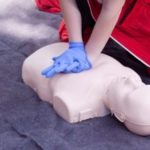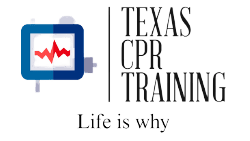
The Success of Hands-Only CPR Kiosks
If you have ever been to the Dallas Fort Worth International Airport after 2013, you might have come across an American Heart Association kiosk that says Hands-Only CPR. This CPR kiosk was installed in the airport in 2013 to start an initiative to teach more people. A skill that has the potential to keep someone alive and safe from suffering potentially life-threatening consequences.
Since then, more than 30 kiosks have been installed at airports and other locations in various cities across the US. They are strategically located in airports where people await boarding and need an activity to pass their time. The kiosks offer these travelers a constructive and practical way to pass their time and learn something that can make an impact in someone else’s life.
Hands-Only CPR Training Kiosks
The hands-on method is designed specially to offer a quick, easy and accessible CPR training session that equips people with the most basic CPR skills. These kiosks are interactive and feature a touch screen monitor that plays a “how to” tutorial that relays the steps of the AHA-approved hands-only CPR technique.
The brief training video is followed by a practice session that is performed on a practice rubber torso embedded into the kiosk. The practice session lasts for 30 seconds where the participant performs the compressions on the torso. The kiosk then provides feedback on how the participant performed.
The kiosk’s evaluation covers all the main factors that affect the efficiency and effectiveness of hands-only CPR. The feedback is comprehensive and reports on the depth of the participant’s compressions, the proper hand placement, and the rate at which the compressions were administered.
Since their installation, these kiosks have taught the hands-only CPR technique to many people across the country.
Success of CPR Kiosks
A research team from the University of Arizona conducted a short study on the kiosk currently located in the Dallas/Ft.Worth international airport. During an American Heart Association Resuscitation Science Symposium, the research team presented the findings from the study they conducted.
These findings showed that a group who underwent the training at the kiosk reacted faster in calling 911 and beginning to administer CPR, compared to the group who didn’t undergo the training.
The results from this studies show that with only a few minutes-long training session, people would be able to react faster in an emergency situation and save someone’s life. Since the average emergency response time is 8-12 minutes in the US, these finding only prove that it can improve if more people are equipped with basic CPR training.
Student Saves life at the University of Dayton Campus
21-year-old student, Lickenbrock was rushing to class when he witnessed lightning strike a building and a fellow student lying face-down in a parking lot.
Sean Ferguson, 23, was struck by lightning and he was not breathing or moving at all. Lickenbrock reacted immediately and began performing compressions he had learned a few days ago at AHA’s CPR kiosk at the Dallas airport.
This story and many others like it in other cities, prove the significance of these kiosks and how they are making a significant impact in the community. So if you happen to come across one while waiting for a flight, head over to the kiosk and learn a life-saving skill.
If you are in the Dallas, Texas area and looking for a CPR certification course call Texas CPR Training. We offer classes every week. If you have a group of 6 students or more Texas CPR can come to your location. Call 214-770-6872 to schedule group training.
Hands-Only CPR training kiosks are effective
Hands-Only CPR Kiosks
Brought to you by Texas CPR Training
